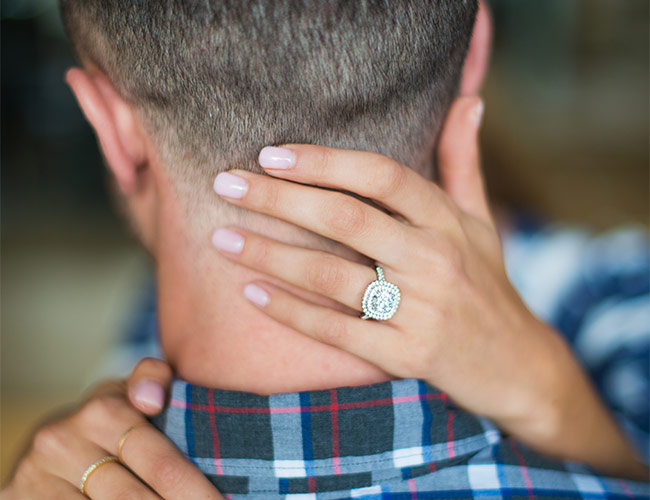
Introduction
In a sunlit office on the 23rd floor of the World Diamond Tower, overlooking the corner where 47th Street runs into Fifth Avenue in New York City, men, occasionally couples and sometimes entire extended families sit at a small white table and make one of the biggest financial and emotional decisions of their and their significant others’ lives. Welcome to custom ring designer Jade Lustig’s office. Please step in.
It’s sometimes said that within the Diamond District, that stretch of 47th Street spanning between Fifth Avenue and Sixth Avenue, operates the world’s highest concentration of small business owners. With obvious exceptions being iconic retailers like Tiffany & Co., with their gray flagship store only 10 blocks north of Lustig’s, and online giants like Blue Nile, the person-to-person sale of engagement rings has remained a very viable business for small business.
The reason is simple: this is a transaction premised on personal relationships and trust. Lustig offers something that can’t be easily replicated online or from a cheaper operation abroad. A ring is a decision that leads to a starter home, minivans, fights, family dinners and vacation days. In many cases, when jewelers sell an engagement ring they earn a lifelong customer. After all, after marriage comes anniversaries, birthdays and surprise gifts for when you’ve fucked up. You want someone you trust. Please sit.
There’s a “sex appeal of the stone that isn’t on a certificate,” she said.
Jade Lustig’s family, the Traus, have been in the diamond industry since Jade’s great great grandfather started selling rose cuts in 1880. Then, after World War II, Lustig’s grandfather’s eldest brother, a Belgian POW, became a sight-holder of a De Beers mine as part of war reparations, giving the family access to rough diamonds 10 times a year. Lustig’s been in the jewelry world herself for 17 years. She got her start ensuring that cuts were done precisely and now, with her husband, she owns and operates Jade Trau, a boutique custom jeweler in NYC.
The first question Lustig asks her clients is always the same: How much do you know? “I always prefer when they have a bit of education so they feel confident,” she says. Then the questions move along: “Do you have an idea of the shape?” “What sort of ring?” “What’s your budget?” “What’s your timeline?” With these questions answered, Lustig says the sky’s the limit. That’s the truth not just at Lustig’s shop, but wherever a customer chooses to go. Engagement ring options exist online, in stores with iconic blue boxes and historic names, or in any of the offices down the hall from Lustig. We spoke with Lustig and other industry experts to mine the knowledge required to make the big decision confidently, whether that be one of the more traditional rings that Lustig designs, or something different. The options are near infinite, and this guide is designed to start you down a stressful and rewarding path.
The beauty of online shopping is being able to find the right product for the best price and in the
easiest way possible. Shopping for an engagement ring should be no different. JamesAllen.com offers more than 150,000 certified conflict-free diamonds at just the right price so it’s (relatively) stress-free to find a ring that’s perfect for your partner.
Learn More
The Journey of a Diamond Ring, a Film
Film by Sung Han
Tradition & History
T
he diamond set on a typical ring was formed over a billion years ago by the intense heat and pressure of the Earth’s mantel. Carbon molecules with enough energy to bond into a lattice structure formed one of the hardest natural materials on Earth. First discovered in India in the fourth century BC, the stones were extremely rare and associated with royalty until the late 1800s when productive mine discoveries in South Africa flooded the market. Then De Beers, a name now synonymous with the rocks, bought up all the mines in South Africa and pushed up prices, increasing the diamonds’ value. But it wasn’t until the 1930s that diamonds were associated with engagement rings, right around the time that the Great Depression and a World War made them unaffordable to many young couples.
“In some parts of the world the diamond is a symbol of purity, so clarity is the most important thing,” said Lustig, before adding, “In America it’s about size, obviously.”
Then in 1947, an advertising campaign changed the industry. Copywriter Frances Gerety coined the famous slogan, “A diamond is forever,” linking the rocks and love, while magazines showed celebrities and movie stars in cocktail dresses with sparkling fingers, ears and necklines. By 1965, 80 percent of all new brides in the United States were wearing diamonds at their wedding, according to the American Gem Society (AGS). Since then, diamonds have remained firmly in the minds of Americans as being synonymous with marriage. The Rapaport Diamond Index, which has measured diamond prices since 1978, shows that, with the exception of the 1980 diamond bubble, the real value of diamonds has remained largely constant in America.
It’s therefore natural that the first step in designing an engagement ring is selecting the diamond — the main event. Everything else about a ring makes up the supporting cast, designed to secure the diamond structurally and highlight its aesthetics without stealing the show. In the case of a man choosing a ring for his spouse, Lustig says to come prepared. “It’s good to do a little recon. If [the woman] doesn’t have a sister or a confidant to ask, or he wants it to be a complete surprise, I ask for pictures of the girlfriend, or her outfits, or other jewelry,” said Lustig. “Sneak in and get a random picture. It gives me a little indication of who they are.” But what are men deciding between?
Roughly $13 billion in diamonds are mined each year. Of these, 30 percent are considered gem quality and make it to jewelers. But for high-end engagement rings, like the ones Lustig designs, the diamonds are much, much rarer. Many of the diamonds that she carries are Forevermark, a brand from the De Beers Group of Companies. Of all the diamonds mined today, Forevermark claims that only one percent meet their standards to carry the brand name.
“Cut is the most important thing, unequivocally.”
To use Forevermark as an example: the diamonds are all in the color range of “D” to “L”, in the clarity range of “FL” to “SI2”, and carry the cut rating of “Very Good” to “Excellent” on the Forevermark Grading Report. These are the types of letters and numbers that face consumers looking at rings — the four C’s of Cut, Clarity, Carats and Color — and they mean little to most people. The confusion increases when the choice comes down to two diamonds that are identically graded on paper — a report from GIA (Gemological Institute of America) or a similar grading organization — but look very different. Lustig says a more rational buyer will have a hard time deciding between the stones, but “at the end of the day this is something that comes out of the ground…they differ a lot from stone to stone.”
To decide, Lustig says you need to pick the one that speaks to you. There’s a “sex appeal of the stone that isn’t on a certificate,” she said. But first, what does the certificate mean? Below is an overview of the most common factors in deciding between a ring, before we explore options for those looking to get more creative with their choices.
Four C’s (and an S)
Cut
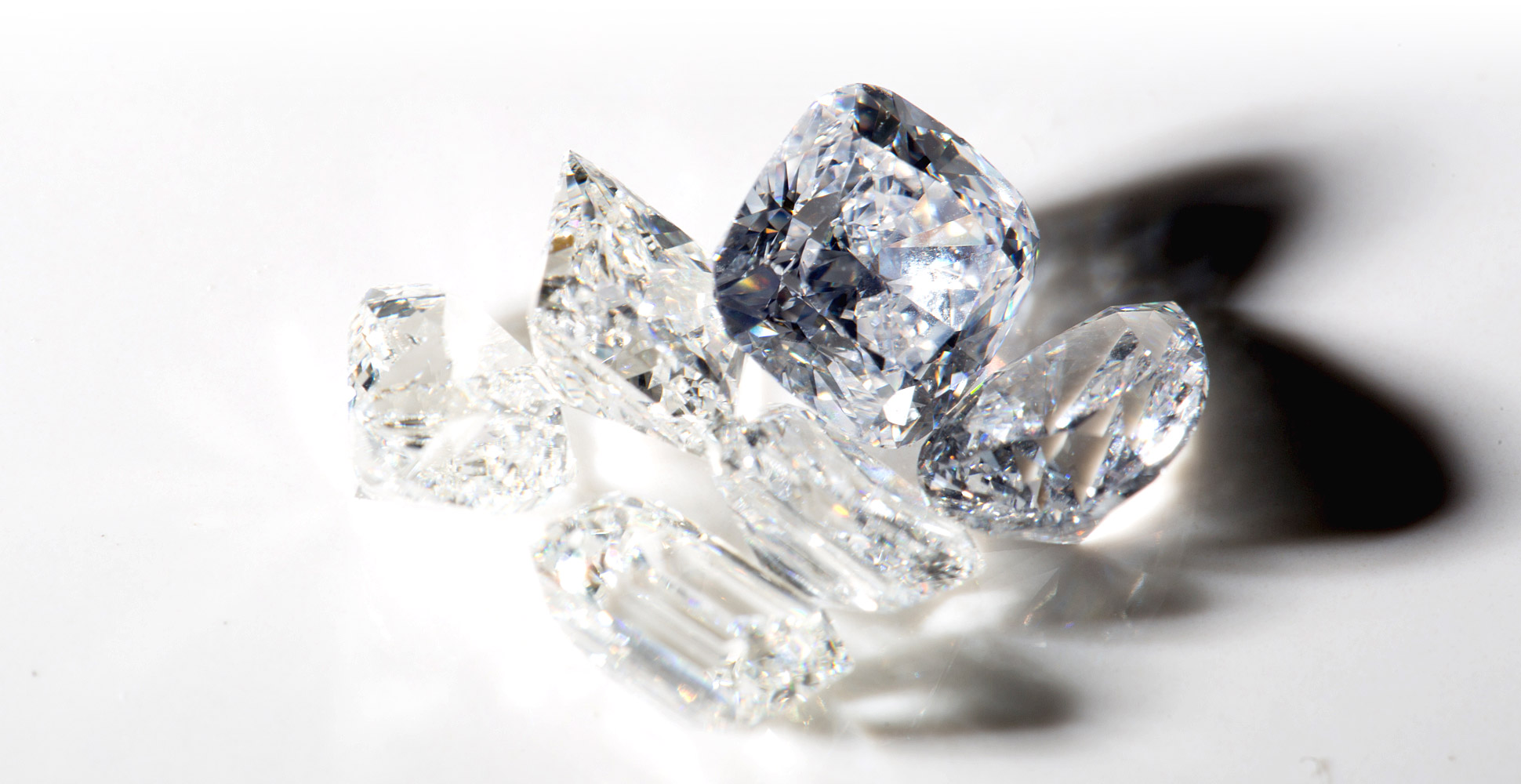
“Cut is the most important thing, unequivocally. That’s something I always open with,” said Lustig, explaining that of all the C’s, you should never look to a worse cut to save money. A great cut can make a bad stone sparkle, and in the end, sparkle is vital. Lustig keeps on hand an extreme example: two brilliantly cut round diamonds, one nearly flawless and the other full of inclusions and flaws. One costs $25,000 and the other $8,000, but from across the room they both sparkle the same amount.
In the ’40s and ’50s, the GIA developed the International Diamond Grading System, which allowed for comparison between jewelers and a uniform way of speaking about the diamonds. Then in 2005, the institute released the GIA cut scale, a uniform system which it uses to determine the grade of round-cut diamonds. There’s currently no internationally accepted system for grading fancy cut diamonds, so grades for these diamonds are more subjective but still reliable. The scale ranges from Excellent, at the top end, all the way down to Poor, and is a reflection of the “brilliance (the total light reflected from a diamond), fire (the dispersion of light into the colors of the spectrum), and scintillation (the pattern of light and dark areas and the flashes of light, or sparkle, when a diamond is moved).” Because weight (and therefore money) is shaved off of a diamond to form the angles required for a top-tier cut, not all diamonds are cut to the highest standard.
Besides GIA, the AGS grading system is also highly regarded, ranging from “Ideal”, down to “Poor”. As GIA and AGS are the only not-for-profit diamond rating institutions, it’s highly recommended to get your diamond evaluated by their labs.
Color
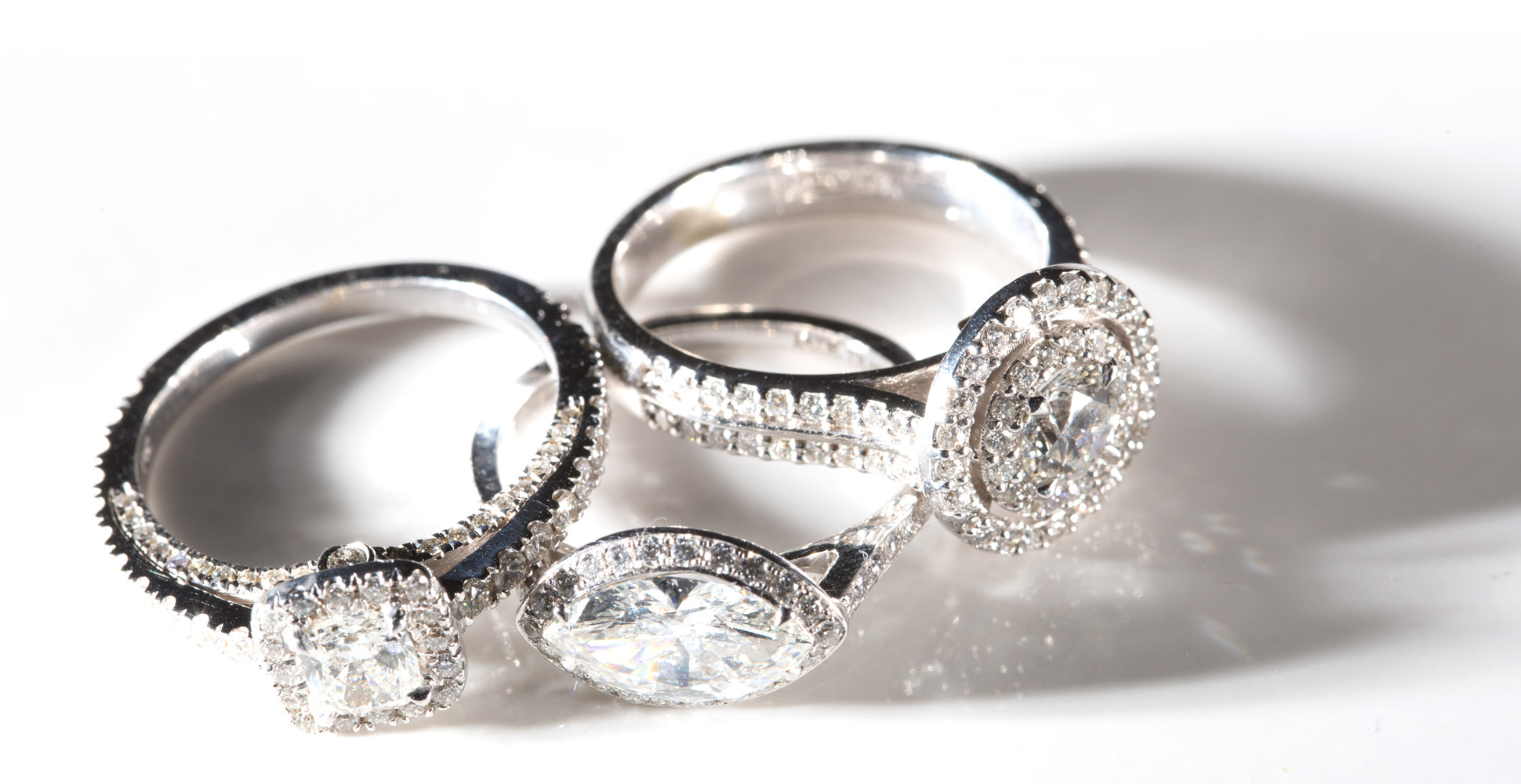
“Color is the biggest misnomer,” said Lustig. “People come in and say ‘Oh I want a white diamond.’ But in reality they want a sparkly diamond, one that has life.” The color grade refers to how little color is in the stone. The scale starts at D, a colorless “white diamond”, and ranges all the way to the light yellow or brown of a Z-colored diamond. (According to GIA, the scale starts at D in order to differentiate itself from other scales at the time, which usually started with A.) Lustig said that if you were to compare a D and a G diamond under normal light, the stones would appear nearly identical, but the D would cost significantly more. In order to show color, Lustig flips the diamond over and shines light through the stone while it sits on a white envelope. Only then do the differences become clear. “Generally speaking I like J-plus color,” said Lustig, referring to scores in the “Colorless” or “Near Colorless” categories.
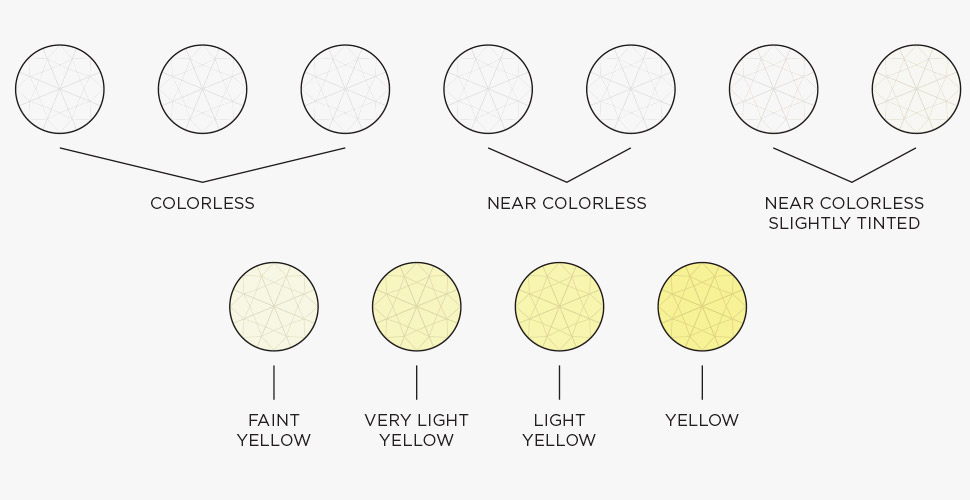
Clarity
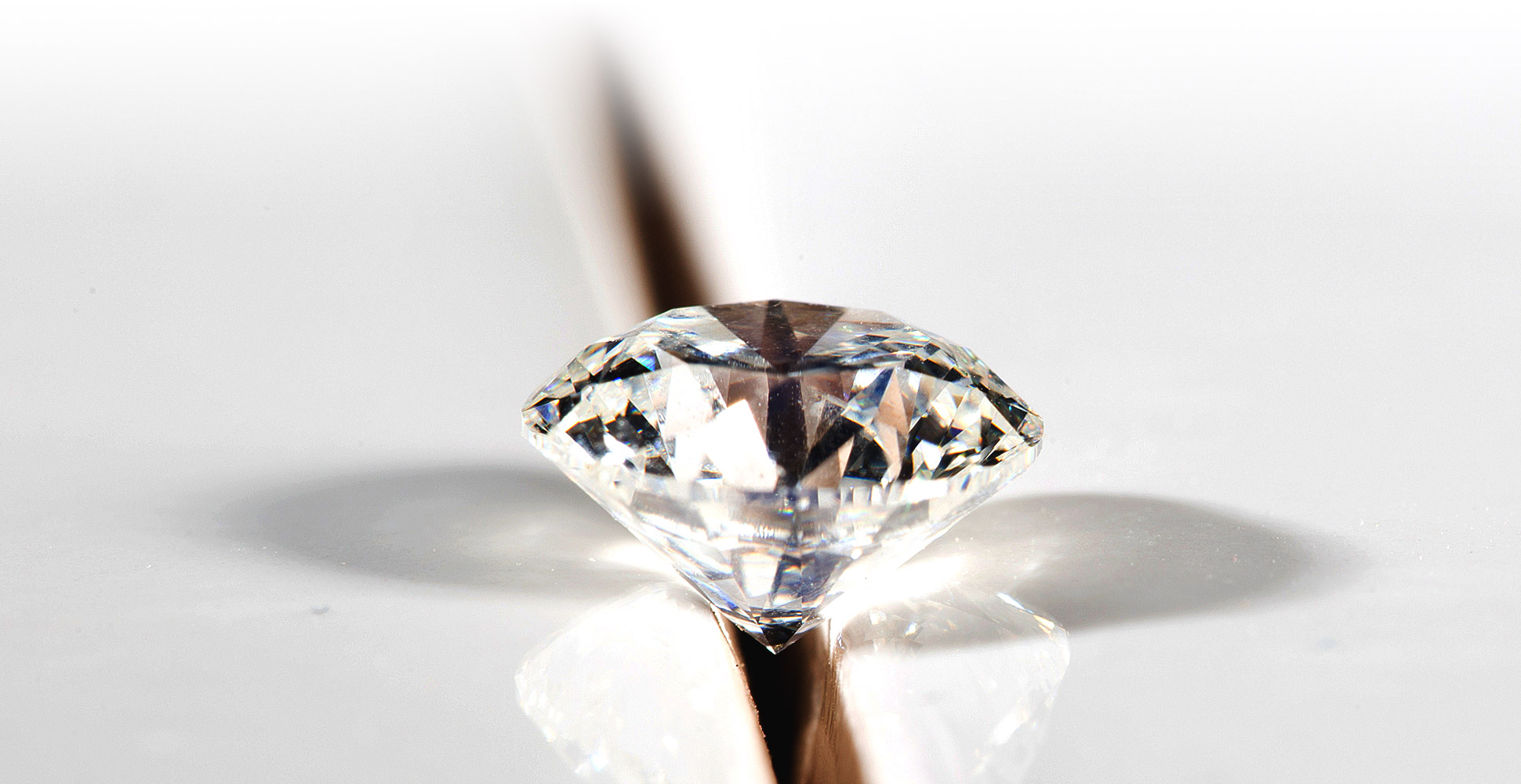
“In some parts of world the diamond is a symbol of purity, so clarity is the most important thing,” said Lustig, before adding, “In America it’s about size, obviously.” Clarity refers to how uniformly the carbon molecules aligned in their lattice when the diamond was formed. Any hiccups occurring on the inside of the diamond are called inclusions; on the outside they are called blemishes. These imperfections are usually difficult to see and are judged by viewing the diamond through a 10x magnifying loupe. The exact location of flaws are noted in the diamond’s grading reports. The top-tier stones are deemed “Flawless” diamonds, which are extremely rare, even to jewelers. The scale then drops to Very Slightly Included at the mid-tier and Included at the bottom. Lustig encourages anything above an SI2+ (Slightly Included or above).
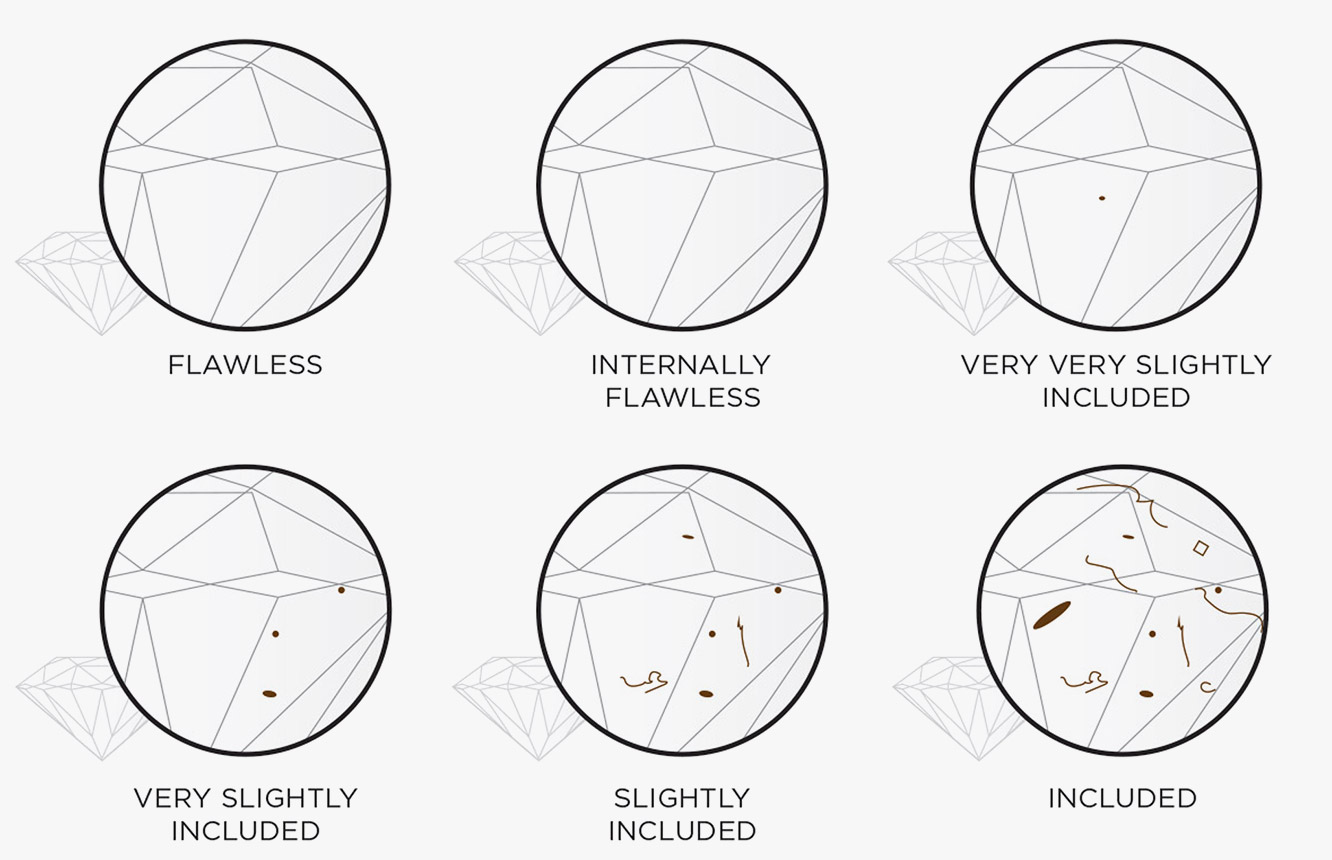
Carats
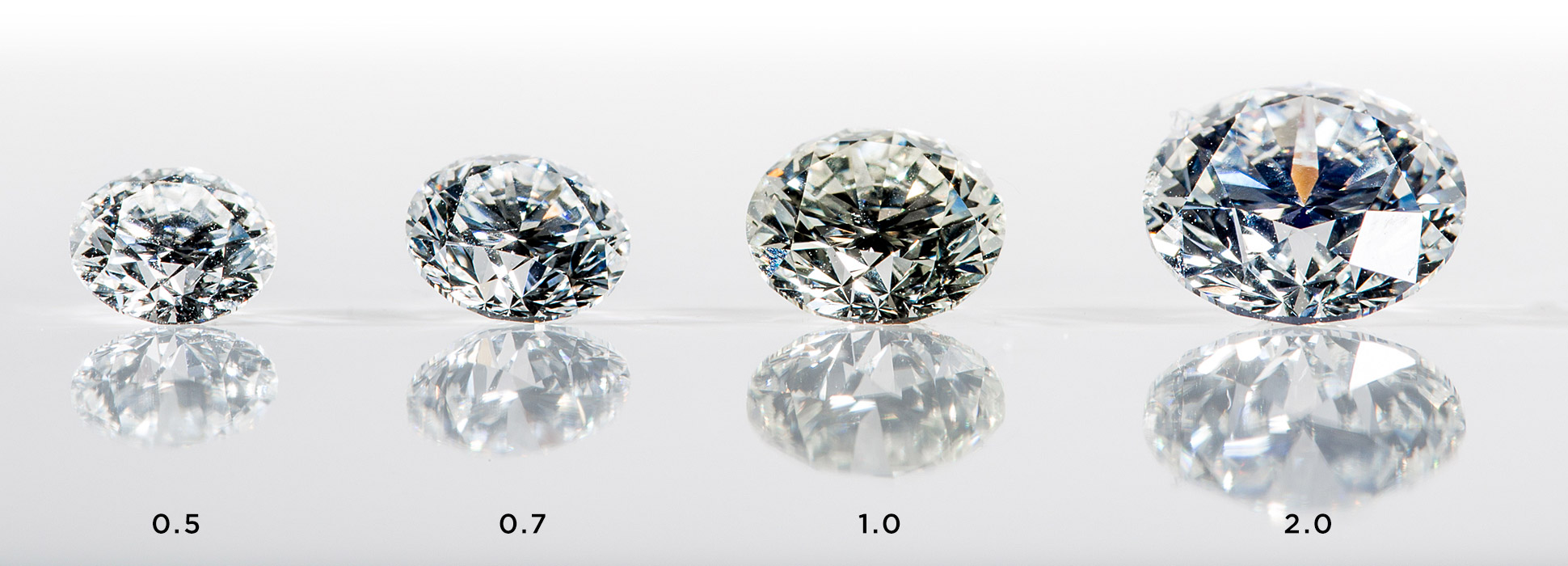
A carat is unit of mass equal to 0.2 grams. Like all aspects of diamonds, there are trends in carat weight selection. “I see movement towards a little diamond that’s centered,” said Mark Moeller, owner of RF Moeller Jeweler in Minnesota. “10 years ago…you couldn’t sell a diamond then that was under a carat.”
Diamonds are priced per carat, but this pricing jumps up based on the diamond’s weight category. In other words, the difference in price between a 0.98 and a 0.99 carat diamond is small compared to the difference in price between a 0.99 diamond and a 1.00 carat diamond. These “benchmark” categories exist at weights like 0.5, 0.7, 0.9 and 1.0 carats. (For a much more detailed explanation of pricing structure, look here.)
Shape

According to the GIA, 80 percent of diamonds sold are round cut. The reason for this popularity is simple: if diamonds are forever, buyers want something that’s forever in style. “I feel that [the ring] should exist in a classic landscape because you should be able to wear it forever and stay current,” says Lustig. The other shapes, called fancy cuts, trend depending on the decades, and the wearer’s age and location. Lustig says she can’t sell some cuts to older clients who recognize them from their mother’s finger, while Moeller said jewelers in the Midwest don’t see trends that originate on the coasts until much later. “Things are slow to come around; by the time princess cuts were popular here in the Midwest, they’d been popular on the East and West Coasts for years,” he said.
The most popular shapes are round, princess, oval, marquise, heart, emerald, pear, Asscher, cushion and radiant. This is a matter of style, but it’s good to note that cuts like Marquise, Pear and Oval make a diamond look larger compared to a similar-sized round cut, due of the elongated axis. Conversely, Cushion cuts tend to look smaller than similarly weighted round cuts. These fancy cuts are representative of a small portion of engagement rings, always fighting for second place behind round cuts. But the trend toward alternative engagement rings is strong, especially among millennials who value personalization and less expensive options.
Alternative Rings


